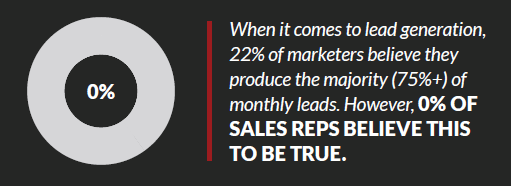Every year, we look forward to publishing our much-anticipated State of Partner Marketing report that details all of the trends and statistics of partner and manufacturer behaviors over the course of the year. And with the data and feedback provided by partners, we were able to put together what we determined to be seven key takeaways to go over at a high level in this blog.
1. Marketing is becoming increasingly important for partners who want to differentiate themselves and grow their businesses.
Partners are engaging in scheduled social media, new email marketing tactics, participating in and hosting events, and publishing blogs in order to showcase their abilities, differentiators, and best connect with their audience. Creating a brand that people not only recognize but will want to trust and work with is all a product from strong marketing practices and becoming an established thought leader in the channel.

2. Partners know they need to be more strategic, but few have the infrastructure or expertise to support these efforts.
Partners are wanting to make sure that they’re getting the right messaging into the right hands, but about only half of partners are actually segmenting customer data in order to reach their desired audience or scheduling regular and targeted emails. Additionally, on 38% of partners have purchased both a CRM and marketing automation to better their overall infrastructure.
3. There is a significant disconnect between sales and marketing, resulting in a negative impact on customer experience.
The report showed us that both the sales and marketing departments believed that the other department did not contribute significantly to the growth of the business.
We realized that having a rift between these departments creates a disconnected experience for customers because of the mixed messaging that’s being used to communicate with these prospects. So when the customer experience is not the same across web platforms, emails, calls, and discussions with sales reps, the brand and messaging as a whole becomes weakened and consequently, the business suffers.

4. Despite the fact many partners are increasing their internal marketing efforts, they still lean on manufacturers for support and resources
About 48% of partners said that they use manufacturer content on a monthly basis, and mostly in an effort to co-brand their assets. This means that although manufacturers have improved the content they offered since last year, there is still a need for customized content specific to the partner, that can also be co-branded with the manufacturer if they choose to do so. This helps them differentiate their content from other partners that are likely promoting the same manufacturer and products.
5. Manufacturers are more responsive to partner needs and are creating better content than a year ago
In 2018, the State of Partner Marketing report showed that partners wanted to lead with their own brand, but still relied on manufacturers for support. They acknowledged that the content could be useful, but that there was a long way to go- and the manufacturers listened. They updated their content accordingly so that it could be more easily customized, but it still has a long way to go.
6. Channel marketing platforms are trending towards becoming resource hubs as partners continue to invest in their own marketing automation
Partners are regularly using the resources from manufacturers but are only sometimes using manufacturer platforms to execute tactics. These platforms are transitioning into becoming more content resource hubs to support partners than automation and execution platforms.
7. The primary focus on ROI has pushed partners to prioritize short-term results, paradoxically having a negative impact on the ability to create long-term pipeline and business growth.
This short-term thinking is causing partners to invest more time and funding in bottom-of-funnel activities in hopes to drive immediate results, but completely ignores top-of-funnel activities in which long term marketing strategies truly take place. If partners focused less on making the next sale and more on establishing themselves as industry leaders, they wouldn’t be fighting for each client’s business, but would have business continuously coming to them instead,
So, although we could see clear improvements from last year’s report for both partners and manufacturers, we can still identify that there’s still a long way to go when it comes to the development and use of resources, marketing tools, and the use of content in IT marketing. To dig deeper into the data and statistics we found and what it could mean for your business, download our full report.

